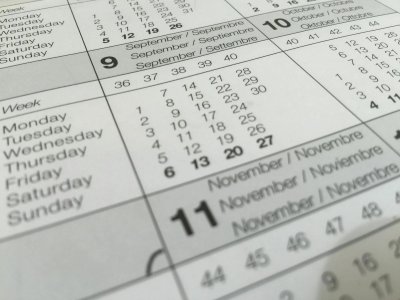Why some Social Security recipients may wait longer for their next payment
By
Veronica E.
- Replies 2
If you depend on Social Security to help cover monthly costs like groceries, utilities, and prescriptions, the timing of your payment is no small matter.
For millions of Americans, that deposit is a financial lifeline.
But what you may not realize is that not everyone gets paid on the same day each month—and in some cases, that can create an unusually long gap between checks.
At The GrayVine, we’re here to help you stay on top of important changes that could affect your routine.
This month, one group of Social Security recipients may experience a longer wait than usual between payments.
Here's why that’s happening, who’s affected, and what you can do to stay financially prepared.

The Social Security Administration (SSA) doesn’t send all payments at once.
Instead, it uses a staggered schedule to manage the volume of payments and avoid overwhelming the banking system.
Your payment date depends on a few key factors:
The group most affected by this month’s delay is known as Group 1—beneficiaries who started receiving Social Security before May 1997.
Normally, this group receives their payment on the 3rd of each month, unless that date falls on a weekend or holiday.
That’s exactly what happened this May.
Because May 3rd fell on a Friday, recipients in Group 1 received their payment one day early—on Thursday, May 2nd.
The next scheduled payment for this group won’t arrive until Monday, June 3rd, creating a longer-than-usual gap between deposits.
You are, if:
If that sounds like you, mark your calendar: your next payment is scheduled for June 3rd.
This isn’t an error or a sign of a problem with your account.
The SSA moves payments to the nearest business day when the usual date lands on a weekend or federal holiday.
It’s simply how the system works—but it can occasionally leave a longer stretch between one month’s payment and the next.

If you started receiving benefits after May 1997, your payment date is based on your birth date:
SSI payments are typically issued on the 1st of each month, unless that falls on a weekend or holiday—then they’re moved up.
If you’re in Group 1 and feeling the pinch this month, you’re not alone. Here are a few simple steps that might help:
Understanding how Social Security payments work can help prevent surprises.
The SSA publishes its full payment calendar each year, and you can check your personal schedule anytime by logging into your my Social Security account at ssa.gov.
Read next: Trump's new rule change could drastically affect your Social Security benefits

Have you had to stretch your budget due to a longer wait between Social Security payments? Do you have any tips for handling those in-between days? We’d love to hear from you—your story might help someone else feel less alone or find a helpful solution!
For millions of Americans, that deposit is a financial lifeline.
But what you may not realize is that not everyone gets paid on the same day each month—and in some cases, that can create an unusually long gap between checks.
At The GrayVine, we’re here to help you stay on top of important changes that could affect your routine.
This month, one group of Social Security recipients may experience a longer wait than usual between payments.
Here's why that’s happening, who’s affected, and what you can do to stay financially prepared.

Understanding when your Social Security payment arrives can help you plan ahead and avoid surprises. Image Source: Pexels / Markus Winkler.
How Social Security payment dates are scheduled
The Social Security Administration (SSA) doesn’t send all payments at once.
Instead, it uses a staggered schedule to manage the volume of payments and avoid overwhelming the banking system.
Your payment date depends on a few key factors:
- When you started receiving benefits
- Your birth date
- Whether you receive Social Security retirement, disability, or Supplemental Security Income (SSI)
Also read: Trump just dropped a Social Security update—Here’s what to know
Who might notice a longer gap this month?
The group most affected by this month’s delay is known as Group 1—beneficiaries who started receiving Social Security before May 1997.
Normally, this group receives their payment on the 3rd of each month, unless that date falls on a weekend or holiday.
That’s exactly what happened this May.
Because May 3rd fell on a Friday, recipients in Group 1 received their payment one day early—on Thursday, May 2nd.
The next scheduled payment for this group won’t arrive until Monday, June 3rd, creating a longer-than-usual gap between deposits.
Also read: New Social Security feature could save you time—but there’s a catch
Are you in Group 1?
You are, if:
- You began receiving Social Security before May 1997
- Are the primary recipients with active Social Security benefits
If that sounds like you, mark your calendar: your next payment is scheduled for June 3rd.
Why the gap happens
This isn’t an error or a sign of a problem with your account.
The SSA moves payments to the nearest business day when the usual date lands on a weekend or federal holiday.
It’s simply how the system works—but it can occasionally leave a longer stretch between one month’s payment and the next.

Social Security payments follow a set schedule each month—knowing your group’s date can help you plan with confidence. Image Source: Pexels / Pixabay.
Also read: Could tariffs boost or shrink your Social Security COLA?
What about everyone else?
If you started receiving benefits after May 1997, your payment date is based on your birth date:
- 1st–10th: Paid on the second Wednesday of the month
- 11th–20th: Paid on the third Wednesday
- 21st–31st: Paid on the fourth Wednesday
SSI payments are typically issued on the 1st of each month, unless that falls on a weekend or holiday—then they’re moved up.
How to manage a longer gap between payments
If you’re in Group 1 and feeling the pinch this month, you’re not alone. Here are a few simple steps that might help:
- Plan ahead – Stretch your budget for the extra few days if you can.
- Set up bank alerts – Many banks let you receive a text or email when deposits arrive.
- Check your account regularly – Log into your bank or SSA account to confirm payment activity.
- Look into community support – If you’re in a bind, local food banks, senior centers, or religious organizations may be able to offer short-term help.
Understanding how Social Security payments work can help prevent surprises.
The SSA publishes its full payment calendar each year, and you can check your personal schedule anytime by logging into your my Social Security account at ssa.gov.
Read next: Trump's new rule change could drastically affect your Social Security benefits
Key Takeaways
- Social Security payments are distributed on a staggered schedule depending on when beneficiaries started receiving benefits.
- Group 1 recipients—those who began receiving benefits before May 1997—typically receive payments on the 3rd of each month.
- In May 2024, this group received payment early on Thursday, May 2, because the 3rd fell on a Friday, resulting in a longer gap until the next payment on Monday, June 3.
- This timing follows the official Social Security schedule and isn’t an error; affected recipients are encouraged to budget accordingly.
Have you had to stretch your budget due to a longer wait between Social Security payments? Do you have any tips for handling those in-between days? We’d love to hear from you—your story might help someone else feel less alone or find a helpful solution!






